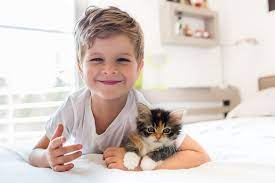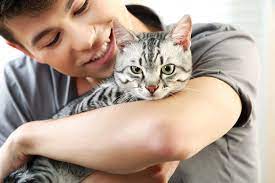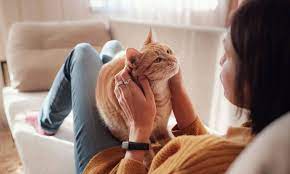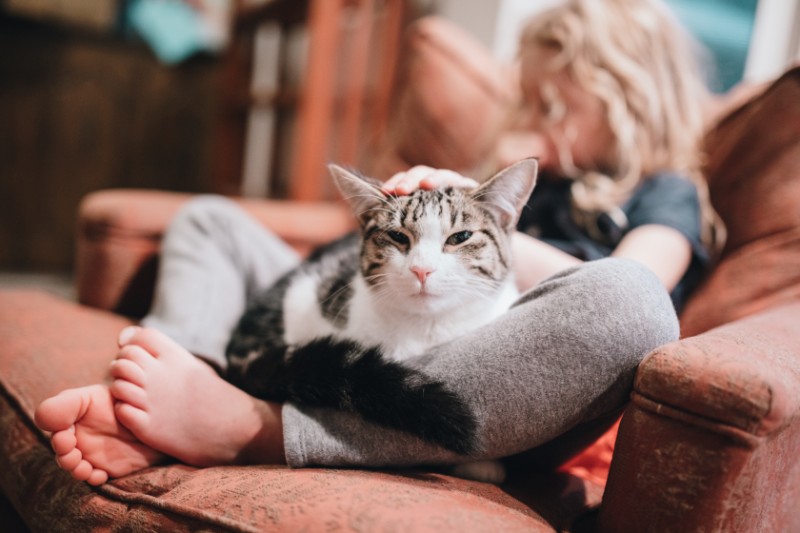Hello!
 Cats are wonderful buddies and companions. Of course, many of us would welcome a fluffy friend in the house to lighten our days with its adorable purring and warmth. However, before adopting a kitten into your home, consider the responsibility you are taking on for your animal’s future. It’s crucial to consider the expense of owning a cat, whether you’re just starting out by visiting shelters, or have already picked up a new feline buddy. If you find it difficult to assess your options, you can turn to the newest technological innovations that will help more people find their potential friends.
Cats are wonderful buddies and companions. Of course, many of us would welcome a fluffy friend in the house to lighten our days with its adorable purring and warmth. However, before adopting a kitten into your home, consider the responsibility you are taking on for your animal’s future. It’s crucial to consider the expense of owning a cat, whether you’re just starting out by visiting shelters, or have already picked up a new feline buddy. If you find it difficult to assess your options, you can turn to the newest technological innovations that will help more people find their potential friends.
It is crucial to have some emergency funds because there could be a necessity to take care of your four-legged pals in different circumstances. On average, around $1,200-$2,500 is spent in the first year of welcoming a new family member, according to statistics. However, these figures may vary drastically, depending on different factors.
Taking a cat from a shelter costs a small adoption fee because they need money for the animals. The standard prices range based on the shelter, breed, and age of the cat you are choosing, but the amount between $50 and $175 is the average number. Buying an animal from a breeder will be more pricey. Some breeders may charge up to $750 per cat. The breed of a cat is the key factor here.
However, so many great cats and kittens are looking for their forever home! You may also rescue a life by bringing a cat from a shelter or the street into your home. However, it is highly hazardous. Outdoor kittens may be more difficult to litter-train and scratcher-train, plus they may have health issues and concealed diseases. If you choose this option, the finest possible care for the animal is even more important than you think.
One-time Costs
The first few days with a cat in the home may cost a fortune. If you want to provide a pleasant environment for the animal in a new house, you must set up a toilet, a space in the kitchen and a bedroom, and start collecting some nice toys. If you save a kitten from the street, you must take it to a veterinarian right away and treat it for fleas and worms.
 In addition, the expenses of the following procedures must be considered:
In addition, the expenses of the following procedures must be considered:
– Kittens must receive their initial immunization course within their first few weeks of life. It’s the most effective approach to keep kids safe from common and serious infections. The vaccine regimen consists of two shots administered every 3 to 4 weeks.
– It is advised that you implant a microchip in your cat so that it does not become misplaced.
– The animal must be castrated or spayed. This technique prevents undesired births and dramatically lowers the chance of acquiring numerous illnesses and behavioral issues.
– A competent cat owner should consider the animal’s requirement for annual veterinarian checks.
The one-time charges for each cat, including primary medical treatment, immunizations, and spaying, are around $360-370.
Daily Costs
 The breed of the animal, its unique features such as fur and health specifics, and your lifestyle are all elements that influence the long-term expense of owning a cat. However, during the first year of your cat’s existence, you must mainly spend on your pet’s vital products to meet its daily demands, which might vary in price. These costs include the purchase of food and water bowls, a litter box, cat trees, food, hygiene products, a bed, a carrier, parasite drugs, and other items that will make your cat’s life fulfilled.
The breed of the animal, its unique features such as fur and health specifics, and your lifestyle are all elements that influence the long-term expense of owning a cat. However, during the first year of your cat’s existence, you must mainly spend on your pet’s vital products to meet its daily demands, which might vary in price. These costs include the purchase of food and water bowls, a litter box, cat trees, food, hygiene products, a bed, a carrier, parasite drugs, and other items that will make your cat’s life fulfilled.
The cost of grooming a cat varies directly correlates to the breed. Many cat breeds do not require distinctive grooming techniques for their coat, while others do.
It’s highly recommended to find out more about your cat’s breed because this info is key. There is a simple way to do it by using cat breed test kit. For example, the Norwegian forest black cat has an incredibly thick, double coat that keeps it warm during the severe Scandinavian winters. Brushing every 2-3 days is necessary to prevent tangles. So these cats are simply predisposed to excessive molting throughout the summer, necessitating more regular brushing.
There are several cat litter box designs available, ranging from inexpensive plastic litter boxes to more costly automatic self-cleaning types. If your home has numerous floors, try placing a tray on each one. It is critical to keep the litter boxes spotless since cats may refuse to use them.
To carry your cat to the vet or anywhere else, you will need a carrier. Its costs may also vary, based on the model you select.
Cat trees, which are, basically, scratching posts, provide an excellent sharpening environment as it is a natural activity for cats. Having at least one cat tree in the house is common sense, but for active cats, there could be two or three posts. It is also a good idea to supply some additional toys for your cat’s pleasure, particularly if you want to keep your pet indoors. Furthermore, employing scratching posts helps protect your furniture and draperies from harm.
 Cats are known to explore their area, climb, and conceal. As a result, if you want to secure your pet’s well-being, it is advised that you establish play complexes for cats that encourage physical exercise while also providing a safe environment.
Cats are known to explore their area, climb, and conceal. As a result, if you want to secure your pet’s well-being, it is advised that you establish play complexes for cats that encourage physical exercise while also providing a safe environment.
Purchasing cat food is clearly an ongoing expense.
Depending on your cat’s age and lifestyle, choose high-quality food that contains important nutrients. The texture of the meal might vary between moist and dry. You can swap wet and dry food on a regular basis. Alternatively, if your cat favors particular meals off the usual menu, be sure to spoil it with its favorite treat. However, because each cat’s menu is unique, determining the exact quantity of food expenses is quite difficult.
Your cat will also require bowls for food and water (even several water bowls if you use dry food). You can use any available on the market or those in your house. Your cat’s comfort and health should be your top priority, so remember to clean the bowls on a regular basis to avoid the growth of hazardous bacteria.
Drinking fountains may also be purchased to encourage your cat to drink more water. Because certain cat breeds like playing with water, these fountains might help to broaden your pet’s play activities.
If you don’t want to worry that your cat may go missing, it’s worth getting a collar and identification tag for the cat. All the domestic cats must wear a collar and identification tag if they go outside.
Annual Costs
 All pet owners should evaluate the annual expenditures of caring for their pet as well as any unforeseen events that may incur additional fees. Periodic veterinarian check-ups, flea and tick prevention, and other treatments required to keep your cat healthy should be budgeted for. Also, do not rule out the chance of unanticipated events or emergency surgery, which might cost hundreds of dollars. A typical year can cost between $500 and $4,200 to keep your cat, although these amounts might vary depending on the conditions.
All pet owners should evaluate the annual expenditures of caring for their pet as well as any unforeseen events that may incur additional fees. Periodic veterinarian check-ups, flea and tick prevention, and other treatments required to keep your cat healthy should be budgeted for. Also, do not rule out the chance of unanticipated events or emergency surgery, which might cost hundreds of dollars. A typical year can cost between $500 and $4,200 to keep your cat, although these amounts might vary depending on the conditions.
The presence of a cat in the house is a joyful and exciting event. However, it is essential to recognize that maintaining a pet entails some fees that are necessary to ensure a cat’s well-being throughout its life. As a result, before bringing this new buddy into your life, please ensure that you have the financial means to give the greatest circumstances and care for your pet’s health and happiness throughout its life.
Thank you!
Join us on social media!
See you!






